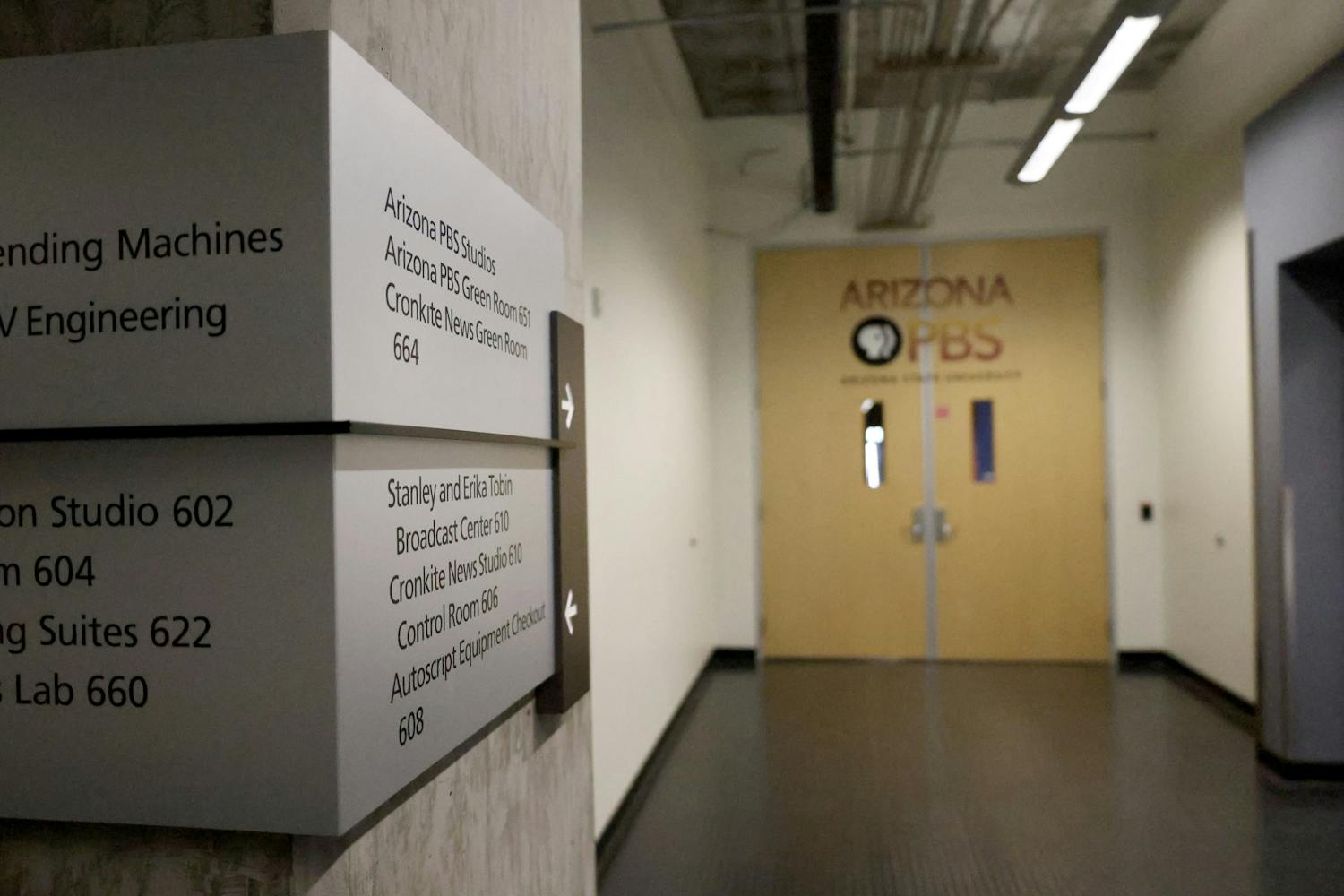The fifth floor of the H-wing of the Bateman Physical Science Center was converted from a corridor of classrooms to a portal into galaxies millions of light years away Friday night during this semester’s first astronomy open house.
Nearly 80 children, adults and astronomy enthusiasts filled the hallways and the roof, where astronomy graduate students presented and explained the mysteries of the cosmos.
Guests were greeted by earth and space exploration doctoral candidate Lev Spivak-Birndorf and a table covered in meteor fragments and minerals — some of which pre-date the formation of the universe.
Children as young as 4-years-old were allowed to hold and examine what Spivak-Birndorf called "some of the oldest solid objects in the solar system."
Rushing to make last minute preparations, earth and space exploration doctoral candidate Angel Fuentes, who organized the first of three open houses this semester, said he was excited to show off ASU's many space-related resources.
"We hope to show the community all of the great wonders of space and the stuff we do here at ASU," Fuentes said.
People came from as far away as Surprise to view galaxies, nebulae and planets from one of six telescopes on the roof of the building.
Telescopes manned by astronomy students focused in on Jupiter, star systems and galaxies, like Andromeda, N-57, Mizar and Albireo, while the students answered questions and explained concepts to the young crowd.
"I liked Jupiter and the Nebulae and getting to touch the rocks," said 9-year-old Nicholas Gordon of Phoenix, who, according to his grandfather, "dragged his grandparents" to look at the stars.
Eight-year-old Phoenix resident Emrita Roades agreed.
"I liked Jupiter the best and getting to touch the rocks," Roades said.
Graduate students put together the two-hour open house, which included films and presentations about space and geology, from the Astronomy department on a volunteer basis.
Each open house will include a voluntary presentation from doctoral students about all things space-related.
This week’s presentation was called "Other Worlds: Exo-solar Planets," by doctoral candidate Simon Porter.
"Exo-solar planets are planets that could host life. My presentation shows pulsar planets, and why these exo-solar planets can support life," Porter said.
About 35 people sat in as Porter explained the ins-and-outs of exo-solar planets, and the importance of studying them.
Porter is part of what he refers to as "the Michael Crow merger process," that combined several space related disciplines into an umbrella program allowing for a combination of several related disciplines.
"The merger is good for us,” Porter said. “A lot of these things are inter-related, and it's helpful to be able to combine certain things.”
The astronomy open houses are free to guests, but the roughly 15 graduate students donate their time on a voluntary basis. Donations are accepted.
The next astronomy open house will be held October 31 at 8 p.m. on the fifth floor of the Bateman Physical Science Building's H-wing.
Reach the reporter at jaking5@asu.edu.



